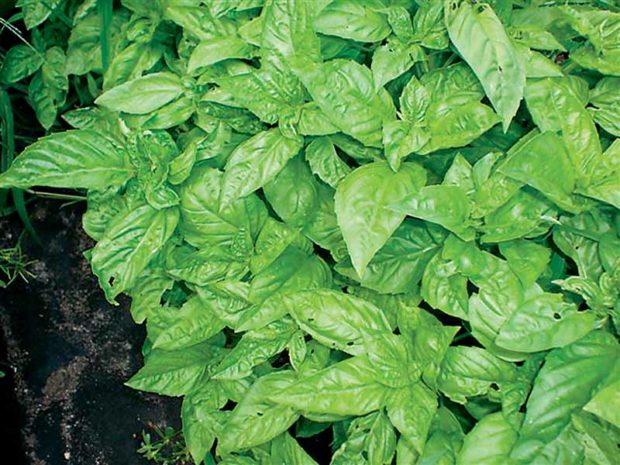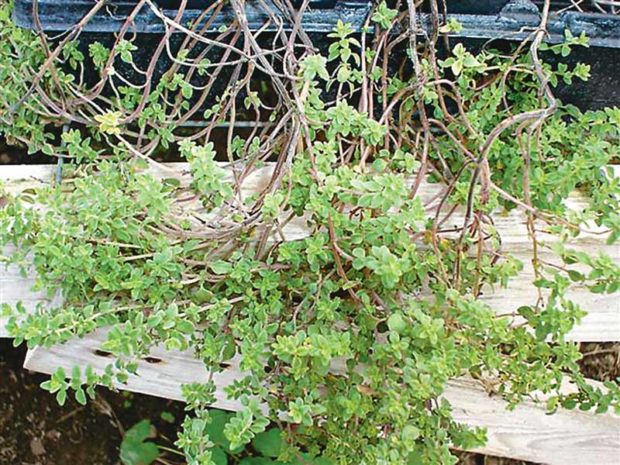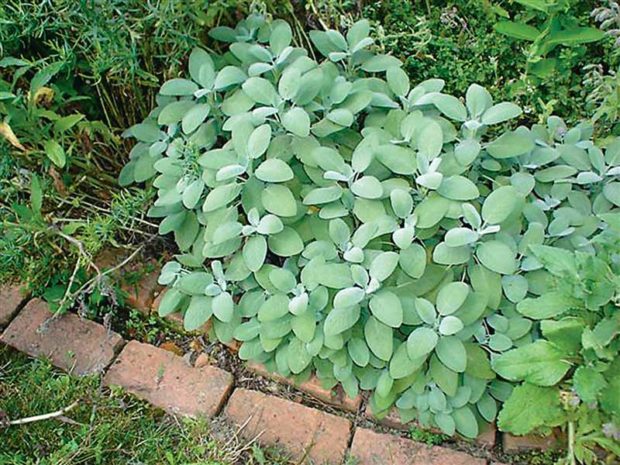The culinary herbs have been the seasonings of the human race for centuries. Culinary herbs, along with medicinal plants, were among the first plants to be given space in garden plots. These tasty gems have always been a cook’s companions, and the more one uses them, the more one wants to know—including their history, lore and legends.

Basil
An annual, basil is usually associated with tomatoes in salads and vegetable dishes. It pairs well with meat, egg and cheese dishes, and soups and stews. It is the main ingredient in a classic pesto. Lemon basil is good with fish. Basil reminds many people of a mixture of cloves, cinnamon, and anise. It was hung in bunches in stables to repel flies, and girls wore a sprig of basil behind their ear to invite a kiss. Don’t bother to bring in a plant from the garden; it has about a six-month life span and will not live long. Start with a baby plant to grow on your windowsill for winter dishes. If you want to dry it for winter, pick a nice bunch from August to the first frost, and use a rubber band that will hold the bunch as it dries. Hang it upside down in your kitchen or a dry place. If you want to freeze it, process it with olive oil or make it into pesto first.

Thyme
The thymes are important to cooks. Most varieties are perennial in Michigan, but they are little subshrubs that only grow about a foot tall, and they tend to get woody, which some gardeners consider unsightly. Thyme is also pleasant on the windowsill for the winter. It holds its flavor and fragrance well when dried, so you can hang small bunches until they are crispy dry and then strip the leaves into a jar for storage. The creeping varieties can be planted between stepping stones where they tolerate light traffic and give off their lovely fragrances. The creeping thymes are important additions to fairy gardens too, where the wee folk enjoyed the fragrant leaves when they danced. It was also thought that fairies lived in the large patches of wild thyme. Sprigs of the flowering herb were embroidered on scarves and flags of knights believing that it bestowed courage onto them. In the kitchen, it is included in “fine herbs” and “bouquet garni” mixtures and is a great herb for meat, soup, vegetables, and fish.
Parsley
Many people think of parsley as a garnish, but it is a garnish that is worth eating! It is a biennial, but most cooks treat it like an annual and plant it fresh each spring to ensure a supply of tender leaves. It comes in three basic varieties: curly, which is usually seen as the garnish; flat leaf or Italian, which is important in lasagna and spaghetti; and Hamburg or root parsley, which has a flat leaf and develops a large turnip-type root used in soup stocks and more. It grows easily on the windowsill to have over the winter, and is good dried as well. It is now recognized as being very nutritious. It was originally used as a garnish so that people would eat it after the meal to freshen their breath and absorb odors. Parsley sprigs are highly nutritive, rivaling oranges for vitamin content.

Sage
Sage is an herb that makes cooks understand the meaning of the old saying, “You should always leave the dinner wondering which herb made the food taste so wonderful.” Too much sage and it will make the dish bitter and distasteful, but the right amount gives a warm taste that is irreplaceable. It is used in poultry seasonings, cornbread and biscuits. It was used in meat sauces to help preserve the meat, and to cover the taste of meat already going bad in the olden days, such as sausage, and to help stop the growth of bacteria in the meat. An ancient Roman proverb asked, “Why should a man die whilst sage grows in his garden?” It is still an ingredient in herbal teas to soothe and relax. Sage flowers attract butterflies and hummingbirds to your garden, and the silver leaves are popular with landscapers and flower arrangers.
Rosemary
A flavoring that is well-known by cooks, rosemary was used in historic times as a wreath for the head to strengthen the memory. Students in many countries still use a sprig of it to help them concentrate. It is also the herb of remembrance and fidelity, and so it is included in both wedding bouquets and funeral arrangements. It was popular as a Christmas herb and in incense mixtures. It was an important ingredient in many magical spells. Rosemary will not winter outdoors in Michigan. Note that it does not go dormant, so it must be watered regularly and well during the winter months on the windowsill. It must also have good drainage so that the roots do not stand in water. A plastic or glazed pot is best so that the tiny rootlets do not dry out between waterings. Use it gently in the kitchen, where it adds character and zest to stew, soup, vegetables and new potatoes.
Mint
A plant that we like to call “easy to grow,” mint is a Michigan native, and is grown commercially in the southwest part of the state. A cook can control this important kitchen herb in the garden by growing it in a pot sunk into the ground. It flavors many drinks, candy, gum, sauces, jellies, meat and fruit salads. It is used with green peas as well as potatoes, carrots, and cabbage. It repels mice, and pennyroyal mint is used to fight fleas. It was for these qualities that it was used as a strewing herb in European castles. It is believed to make the heart merry and to encourage laughter, and is a welcome addition to wedding bouquets.
Knowing all of these things about the culinary herbs makes cooking with them fun and more enjoyable, and can even encourage non-cooks into the kitchen to help!
Jean and Roxanne Riggs operated Sunshine Farm and Garden in Oakland County, MI.
RELATED: Mint Charlatans – Discover herbs that smell and taste like mint without its bad habits
MSU Extension: Growing culinary herbs indoors
